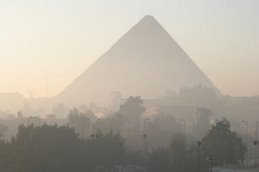Was King Tut really murdered? Did the Great Pharoah Ramesses II die from a disease of the spine? The answers to these age-old mysteries are locked inside Egyptian mummies. Today, they are being unravelled through the modern science of "paleoradiology".
Paleoradiology uses nuclear technologies such as X-rays, computed tomography (CT), and Magnetic Resonance Imaging (MRI) to study artefacts, skeletons, mummies and fossils. Many museums worldwide use the nuclear technologies to discover otherwise hidden details that piece together historic puzzles.
Dr. Rethy Chhem, Director of the IAEA Division of Human Health, has read more than 150,000 skeleton studies in clinical practice and is an expert on the use of paleoradiology. He says the science is a key that gives radiologists insights into former lives of mummies, uncovering details such as the sex, age of death and illnesses.
Dr. Chhem cites the case the Pharoah Ramesses II in which x-rays helped solve historical questions. One question asked through the ages was whether Ramesses II really had ankylosing spondylitis, an arthritic disease inflicting the spine. The x-rays revealed that Ramesses did not have a disease of the spine, Dr. Chhem says, noting that this fits well with his biography describing him as a great warrior.
X-ray technology has been around since 1896, and CT since 1979. Advances since then make the technologies increasingly exact, and quick. Newer prototypes of computed tomography can give additional insights, including both about the well-being and nutrition of ancient mummies.
See the above page for the full story.


No comments:
Post a Comment